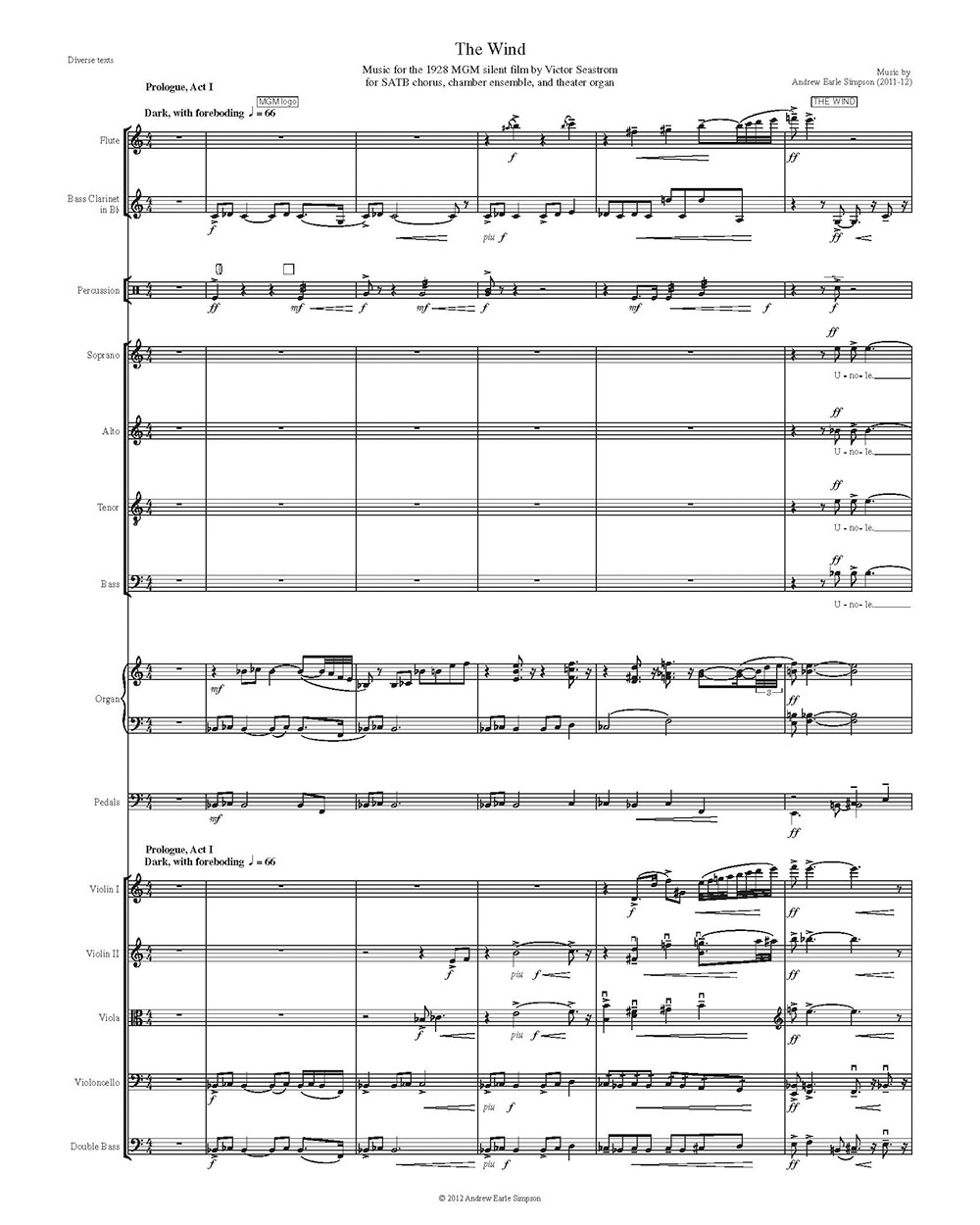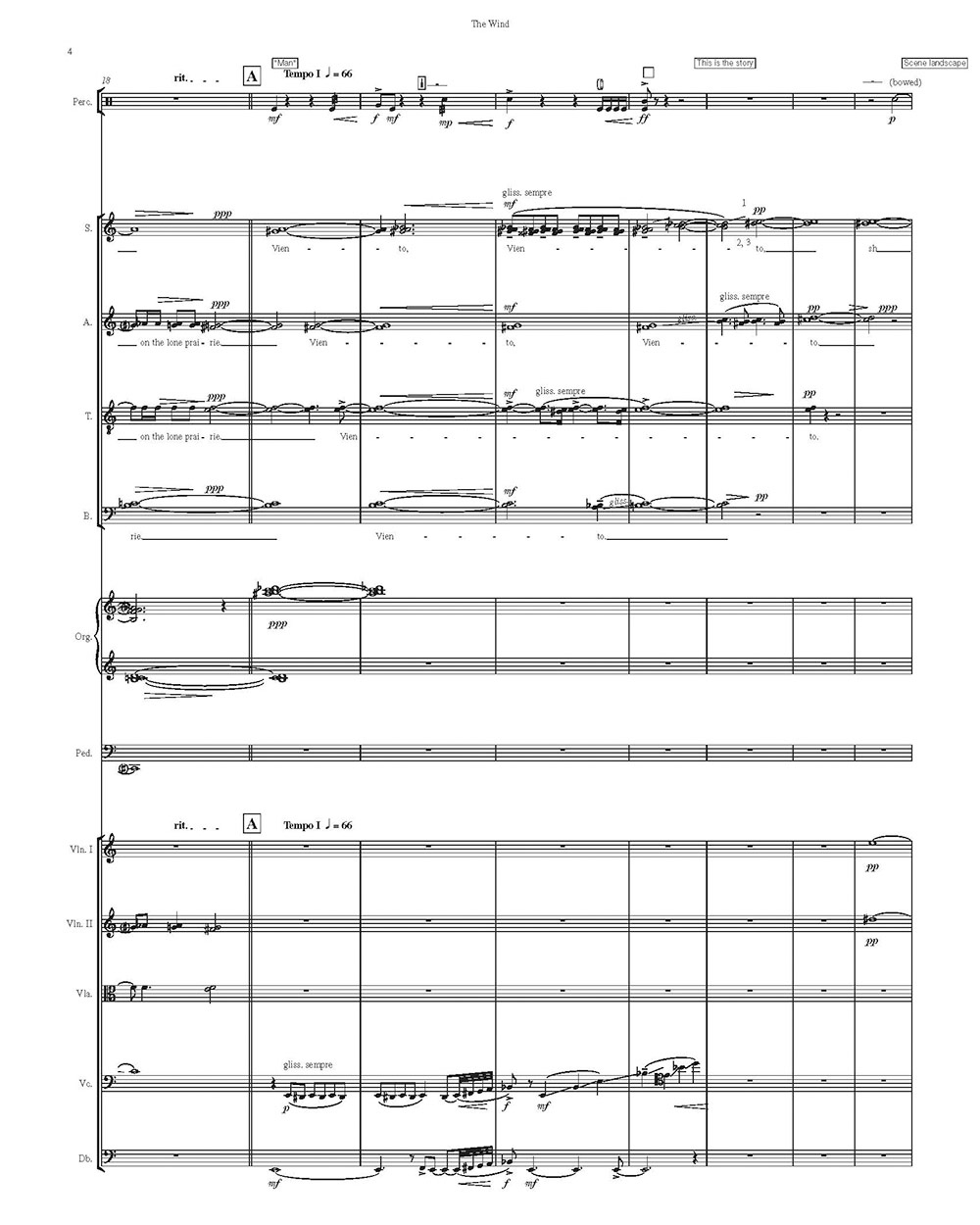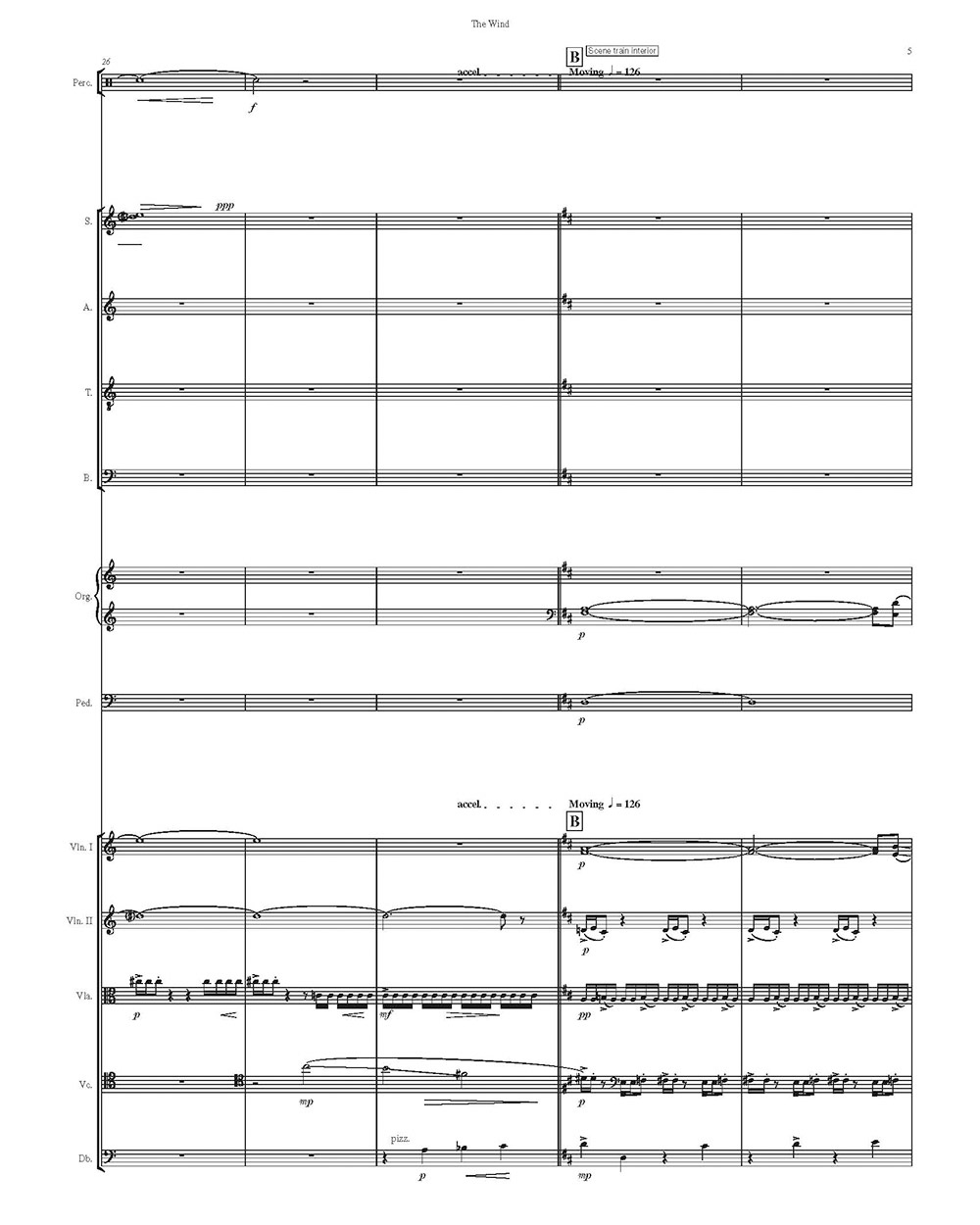The Wind (2011-12)
Music to accompany the 1928 silent film starring Lillian Gish, 73 minutes
Instrumentation
Version 1: SATB chorus, Instrumental ensemble: 1010 0000 1 perc theater org vn I vn II va vc db
Version 2: SATB chorus, theater org, 1 perc SATB chorus (2014)
Version 3: Theater org, 1 perc (2015)
Premiere
June 9, 2012, Cantate Chamber Singers, AFI Silver Theater, Silver Spring, D Gisele Becker, conductor
Listen
Opening/Main title
The boys compete for Letty’s attention
Tornado interrupts the dance
Lige is spurned by new wife Letty
Eerie calm before the storm
Program Notes
Silent film is enjoying a resurgence of interest. The 2012 Best Picture Oscar for THE ARTIST (a mostly-silent film) is only the most high-profile evidence that audiences have been discovering how vital and engaging silent film can be. When accompanied by live music, the experience of seeing a silent film can be even more exciting.
The story of THE WIND, based on a novel by Dorothy Scarborough, is simple and strong. Letty Mason (Gish), a young Virginia belle, is forced to move to West Texas to live with her cousin on his ranch. The vast differences between her Virginia home and this new land create misunderstandings, hostility, and danger for Letty. Hardest of all is the ceaselessly-blowing wind, which steadily drives her towards madness.
I chose to score THE WIND because I believe it is a film that will be very entertaining for audiences, combining humor, adventure, and high drama. Because it shows so many different moods, THE WIND presents opportunities for a composer to draw on a full range of musical expression.
So-called “silent” films are not truly mute, but meant to be seen with accompanying sound, usually music. In fact, during the silent era, directors frequently employed musicians on the set to play while actors performed scenes on camera. The music that accompanies a silent film should neither dominate the film nor work against it; rather, at its best, it should partner seamlessly with the film, supporting its actions and amplifying its emotions, making the viewing experience more special than it would otherwise be.
Music and film both unfold in real time: both tell a story. Music can track the dramatic curve of a film in many ways: one way is to create a small number of key musical ideas which recur and modify to match the evolving drama. I have taken this approach for THE WIND. An audience member may be able to recognize some of these themes, and follow how they change as the story progresses. The wind itself becomes a character in the film: I have created a special style of music representing the wind’s strangeness and (for Letty) horror. The wind’s music - dissonant, ethereal, and mysterious - differs strongly from other music in the score; director Victor Seastrom deliberately created these sudden shifts of atmosphere, I believe, and my music reflects those sharp, immediate contrasts.
The different moods of the film have also allowed me to use many musical styles, each chosen because I feel that they support the mood of the scene taking place on screen. So, the audience will hear some music that reflects folk idioms (fiddle tunes, a waltz, a folk song), some that serves as transition, and some that draws on wider sonic resources: the chorus whistles, whispers, and sings through its full range in the course of the score.
The texts have been assembled from a variety of sources, or have been written by me. To help convey the distant nature of the wind, I chose some words of Cherokee - a language unfamiliar to most - to underscore this. Some phrases in Spanish also appear in what is still a mostly-English libretto.
—Andrew Earle Simpson




